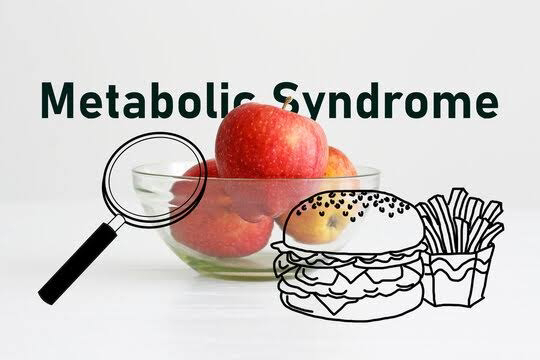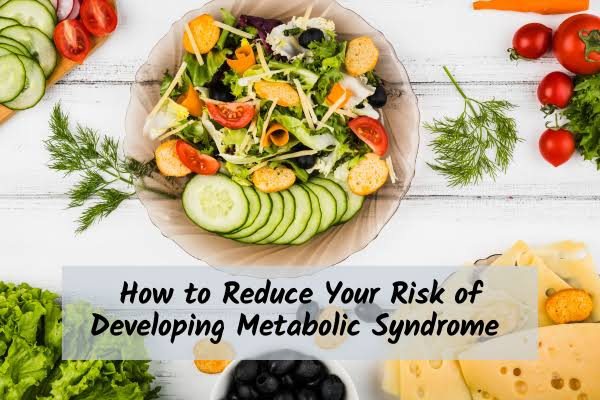Understanding Metabolic Syndrome
Imagine a silent alarm going off in our body—a red flag signaling risk for heart disease, diabetes, and more. That’s what metabolic syndrome is. And in this blog, we’re going to learn exactly what it is, why it matters, and how powerful changes in our daily life can stop it in its tracks.
We're dealing with metabolic syndrome when at least three of these warning signs appear together:
Excess fat around your waist (level of belly fat),
High blood pressure,
High fasting blood sugar,
High triglycerides,
Low HDL (“good”) cholesterol
By simply having three of these, our risk of developing type 2 diabetes or cardiovascular disease skyrockets. Even one of them is enough to signal trouble ahead.
What’s Happening Inside our Body
a) Insulin Resistance: Insulin is the key that allows our cells to absorb glucose. However, when insulin resistance sets in, our cells ignore the key, sugar remains in our blood, and our pancreas responds by manufacturing more insulin. This vicious cycle promotes weight growth, high blood pressure, and abnormal cholesterol levels.
b) Visceral Fat & Inflammation: Belly fat not only looks bad, but it also causes inflammation by generating molecules like TNF-α, which disrupts insulin and blood vessel function.
c) Hormones & Stress: Stress raises cortisol levels, which lead to belly fat, blood sugar increases, and high blood pressure, so increasing the risk.
Who’s Most Likely to Develop It?
One is more at risk if he or she:
Are overweight—especially with abdominal obesity,
Are sedentary,
Have insulin resistance or family history of diabetes,
Are older,
Belong to certain ethnic groups (like South Asian, Hispanic, African-American),
Are stressed or have sleep issues,
Glucose abnormalities, PCOS, fatty liver, sleep apnea,
Smoke or drink heavily
Sodium Retention and High Blood Pressure: Hydration Strategy
Our bodies store sodium to be hydrated, especially when we don't drink enough water. This mechanism, triggered by the hormone vasopressin, raises blood pressure to ensure that fluids are retained. We may perceive this as "high blood pressure," yet our bodies recognize it as an urgent technique of staying hydrated and maintaining circulation during times of scarcity.
Obesity: Energy Conservation for Lean Times
When our bodies store fat, it isn't simply trying to help us acquire weight; it's also trying to conserve energy for later use. Obesity, in this respect, allows us to withstand lean periods by storing calories. It's not a fault; it's an integrated energy conservation system that could have saved lives during famines or food shortages.
Insulin Resistance (IR): A Defense Mechanism
Insulin resistance may appear to be a health risk, but it is actually a protective mechanism against glucose and insulin toxicity. By becoming less responsive to insulin, your body protects your cells from excess sugar. Simultaneously, it increases gluconeogenesis (the production of glucose from non-carbohydrate sources), which is essential for brain function.
Uric Acid: The Overlooked Player
Uric acid is commonly associated with gout, but there is more to it than that. When we consume fructose (such as from fruit or honey), our salt levels decrease while our uric acid levels increase. This actually helps to boost blood pressure in low-sodium environments, ensuring optimal fluid balance. Uric acid also boosts salt sensitivity and acts as an antioxidant, giving our bodies an additional survival advantage.
Fat and Glycogen: Internal Water Source
We may not know it, but stored fat and glycogen serve as a water reserve in our bodies. When these stores are digested, they release water—3.5 grams of water for every 1 gram of glucose stored as glycogen. So, when we don't drink enough fluids, our bodies use stored energy to stay hydrated.
Fruit, Honey, and Fat Genes
Natural sugars found in fruits and honey may appear innocent, but they can be more lipogenic (fat-forming) and activate fat-storing genes. The crucial question is: How frequently do we consume them? The frequency could have a big impact on whether our bodies interpret certain foods as cues to store fat for survival.
Prevention & Treatment: How we Can Push Back
Lifestyle First
Losing weight- even a 7 % drop is transformative;
Exercising regularly- 150 min of moderate activity weekly;
Eating wisely- focusing on whole grains, veggies, lean protein, healthy fats;
Sleeping well and managing stress;
Quitting smoking, and drinking
Conclusion
Metabolic syndrome is more than simply a label; it's a signal that our metabolic health requires attention. What is the good news? With informed decisions and effort, we may reverse its course, reduce disease risk, and recover control of our health. Instead of blaming our bodies for metabolic syndrome, we should consider what our bodies are trying to protect us from. These systems were not formed by accident; they evolved to help us survive. Understanding the logic behind them allows us to begin to work with our body rather than against it. This reframe of metabolic syndrome as a survival strategy does not imply that we should ignore it; rather, we should respect its design. With this knowledge, we can better coordinate our lifestyle and nutrition and support our health.
So, let's get started today. Measure, move, and change. Our future selves will thank us.







Comments
Post a Comment